Teapots, often seen as humble vessels, are a cornerstone of tea culture around the world. These vessels are more than just functional; they are a blend of artistry, craftsmanship, and history. In this comprehensive guide, we’ll embark on a journey through the world of teapots, exploring their history, materials, types, and everything in between.
A Brief History of Teapots
Teapots have a rich history dating back centuries. They originated in ancient China during the Ming Dynasty (15th century) and have since become an integral part of tea culture worldwide. The earliest teapots were crafted from Yixing clay, known for its unique ability to absorb tea oils and improve the flavor over time. These small, unglazed pots were simple in design but cherished for their functionality.
Types of Teapots
Teapots come in various materials, each with its own unique characteristics and charm.
Ceramic and Porcelain Teapots
Ceramic and porcelain teapots are classic choices. They are known for their elegance and diverse designs, making them suitable for various tea types. These teapots are excellent at retaining heat and are often decorated with intricate patterns and motifs.
Glass Teapots
Glass teapots offer a visual spectacle as you watch tea leaves unfurl and dance in the water. They are ideal for showcasing the color and clarity of teas. Glass teapots are fragile but provide a front-row seat to the brewing process.
Cast Iron Teapots
Cast iron teapots, such as Japanese Tetsubin, are revered for their heat retention properties. They distribute heat evenly, making them perfect for certain teas like oolong and black tea. The cast iron material is not only functional but also adds a touch of rustic charm to tea sessions.
Clay Teapots
Clay teapots, like Yixing pots from China, are highly regarded by tea connoisseurs. They are made from specific clay types and seasoned over time, enhancing the flavor of the tea brewed within them. These teapots are prized for their craftsmanship and ability to elevate the tea-drinking experience.
Teapot Shapes and Styles
Teapot designs vary widely, catering to different tea types and brewing preferences.
| Teapot Name | Uniqueness/Potential Use | |
|---|---|---|
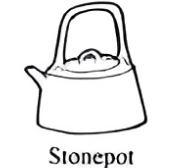 | Stonepot | Sturdy design, ideal for retaining heat and brewing strong teas. |
 | Horizontal Cloud | Wide body allows leaves to expand, good for oolong or green teas. |
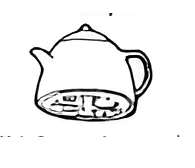 | Wild Goose Longevity | Intricate designs, possibly used for ceremonial purposes. |
 | Crescent Moon | Curved handle and body, suitable for delicate teas and easy pouring. |
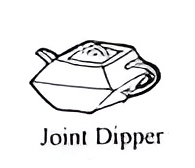 | Joint Dipper | Compact and easy to handle, ideal for personal use. |
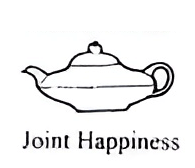 | Joint Happiness | Sleek design, often used for presentation or gifting. |
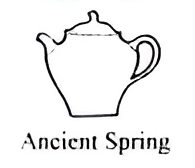 | Ancient Spring | Tall and slender, possibly designed for aromatic teas. |
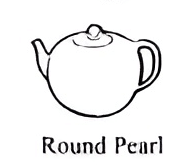 | Round Pearl | Spherical shape for even heat distribution, versatile for many tea types. |
| Straight Body | Classic design, suitable for daily use and various tea types. | |
| Spring Scene | Square shape, might be used for specialized tea ceremonies. | |
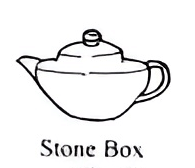 | Stone Box | Solid structure, retains heat well for prolonged steeping. |
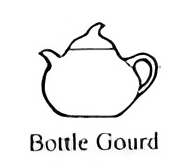 | Bottle Gourd | Unique shape, potentially for decorative or ceremonial use. |
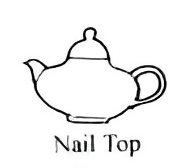 | Nail Top | Compact with a flat top, good for travel or office use. |
 | Square | Modern design, offers a contemporary look for tea enthusiasts. |
 | Rainbow | Elongated spout, allows for precision pouring. |
 | Heavenly Cock | Ornate design, possibly a collector’s item or for special occasions. |
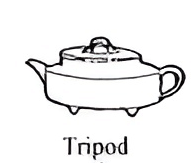 | Tripod | Three-legged design, stable and less likely to tip over. |
| Patches | Rustic appearance, might be favored by those who appreciate vintage items. | |
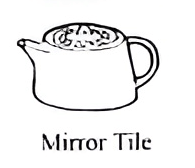 | Mirror Tile | Reflective or glossy finish, serves as both functional and decorative. |
Traditional Teapots
Traditional teapots often feature a rounded body with a curved handle and spout. They are versatile and can be used for a wide range of teas.
Gaiwan Teapots
Gaiwan teapots, commonly used in Chinese tea ceremonies, consist of a lidded bowl and saucer. They are revered for their simplicity and versatility, allowing tea enthusiasts to explore the nuances of tea flavors.
Teapot Sizes
The size of a teapot matters, as it determines the number of servings and the brewing style.
Small Teapots
Small teapots, often used in gongfu-style tea preparation, allow for multiple short infusions. This method is favored for teas that benefit from precise control over steeping time.
Large Teapots
Large teapots are suitable for gatherings and occasions where more servings are required. They are commonly used for black tea, herbal tea, and other varieties enjoyed in larger quantities.
Materials and Construction
The material of a teapot significantly impacts its brewing qualities.
Ceramic and Porcelain
Ceramic and porcelain teapots excel in heat retention, making them ideal for teas that require a stable temperature. Porcelain, with its delicate appearance, is often used for white and green teas.
Glass
Glass teapots provide a visual spectacle, showcasing the beauty of tea leaves and their infusion. They are neutral in flavor, allowing the purest expression of the tea’s taste.
Cast Iron
Cast iron teapots are prized for their ability to evenly distribute heat, making them suitable for brewing certain teas like black and oolong. They are known for their durability and rustic charm.
Clay
Clay teapots, especially Yixing pots, have a porous nature that absorbs tea oils and enhances flavor over time. Each clay type imparts its unique qualities to the tea.
Teapot Handles and Spouts
Teapot handles and spouts are crucial components that influence the functionality and aesthetics of a teapot.
Handle Placement
The placement of the handle affects the balance and pouring control of a teapot. Side handles are common, while some teapots have handles atop the lid.
Spout Design
The design of the spout determines how precisely tea can be poured. Teapots with long, curved spouts are excellent for avoiding splashes and achieving accurate pouring.
Teapot Lids
The lid of a teapot is not just a cover; it plays a crucial role in retaining heat and aroma during steeping.
Tight-Fitting Lids
Lids that fit snugly help trap heat and prevent heat loss while allowing the tea to steep properly.
Built-in Filters
Some teapot lids have built-in filters to catch tea leaves, preventing them from entering the cup. These filters enhance convenience during tea pouring.
Teapot Decorations
Decorative teapots are a testament to the artistry and creativity of artisans.
Hand-Painted Teapots
Hand-painted teapots are adorned with intricate patterns and motifs, often reflecting cultural and historical themes. They require gentle hand washing to preserve their artwork.
Artistic and Sculptural Teapots
Some teapots transcend functionality and become works of art. Sculptural teapots are often crafted by renowned artists and collectors.
Teapots in Culture
Teapots have played significant roles in cultural practices and traditions around the world.
Chinese Tea Culture
In China, teapots are integral to traditional tea ceremonies, with each teapot type serving a specific purpose. They are often passed down through generations as treasured family heirlooms.
Japanese Tea Ceremonies
Japanese tea ceremonies feature teapots designed for matcha preparation, emphasizing precision and mindfulness. The design and placement of teapots are integral to these ceremonies.
British Afternoon Tea
In the UK, teapots are essential for the quintessential afternoon tea tradition. They are often paired with cups and saucers, adding elegance to the tea service.
Teapot Care and Maintenance
Proper Cleaning Techniques: Teapots require regular cleaning to prevent tea stains and maintain their appearance. Depending on the material, teapots can be cleaned in various ways. For porcelain and ceramic teapots, use warm, soapy water and a soft brush or cloth. Avoid abrasive scouring pads that can scratch the surface. For cast iron teapots, rinse with warm water and dry thoroughly to prevent rust. Stainless steel teapots are usually dishwasher safe.
Removing Tea Stains: Tea stains can develop over time, especially in porous materials like clay. To remove stains, make a paste with baking soda and water, apply it to the stained areas, and gently scrub. Rinse thoroughly afterward. Avoid using bleach or abrasive cleaners, as they can damage the teapot’s surface.
Avoiding Odor Absorption: Some teapots, particularly clay and ceramic ones, can absorb tea flavors and odors. To prevent this, rinse the teapot with hot water after each use and allow it to air dry with the lid off. Avoid using strong detergents or soaps, as they can leave a residue that affects the tea’s taste.
Storing Teapots: When not in use, store teapots in a cool, dry place with the lid off to allow air circulation. Avoid stacking teapots to prevent chipping or cracking. If storing a teapot for an extended period, place a paper towel inside to absorb any residual moisture.
Teapot Accessories: Consider investing in teapot accessories like teapot warmers and cozies to keep your tea at the desired temperature during serving.
Teapot Etiquette
Handling and Pouring: When serving tea, hold the teapot by the handle or use a tea cozy or cloth to protect your hands from the heat. Pour tea gently to avoid spills, and be mindful of the strength of your pour, especially when serving delicate or fine china teapots.
Teapot Placement: In formal tea settings, teapots are usually placed on a trivet or stand to protect the table from heat. Use a saucer under the teapot to catch any drips.
Guests First: In social gatherings, it’s considered polite to pour tea for others before serving yourself. Always offer to refill guests’ cups, and ask if they’d like milk, sugar, or other additions.
Stirring and Sipping: Stirring tea is acceptable to mix in any added ingredients. When sipping, do so quietly, without slurping. It’s customary to place the teaspoon on the saucer when not in use.
Acknowledging the Host: When attending a tea gathering, it’s customary to thank the host for the tea and the experience. Expressing appreciation for the tea and hospitality is a common practice.
